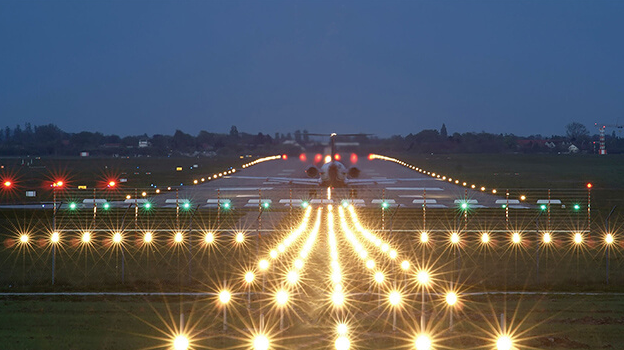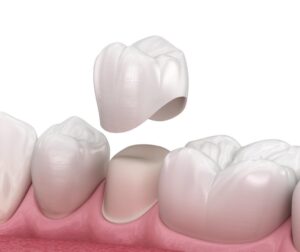
In the vast expanse of the skies, where precision and safety are paramount, the role of AGL lighting systems cannot be overstated. AGL, or Airport Ground Lighting, serves as the guiding beacon for aircraft navigating the labyrinth of runways, taxiways, and aprons within airports worldwide. These lighting systems play a crucial role in enhancing visibility and ensuring the safety of aircraft operations, especially during low visibility conditions such as night-time or adverse weather. In this blog, we explore the essential functions, components, and benefits of AGL systems, shedding light on how they contribute to a safer and more efficient aviation environment.
Understanding AGL Lighting Systems
AGL systems are integral components of airport infrastructure designed to provide visual guidance and navigation cues for pilots during various phases of flight. These systems encompass a diverse array of lighting fixtures strategically installed along runways, taxiways, and aprons to delineate pathways, identify critical locations, and facilitate safe aircraft movement. The primary objective of lighting is to enhance visibility, mitigate risks, and ensure precise navigation for pilots, particularly during adverse weather conditions or periods of limited visibility.
Components of AGL Lighting Systems
AGL systems consist of several key components, each serving a specific function in the provision of visual guidance and navigation for aircraft:
- Runway Lights: Runway lights are the primary fixtures installed along the edges and thresholds of runways, delineating the runway boundaries and providing visual references for takeoff and landing. These lights typically include runway edge lights, runway threshold lights, and runway end lights, which illuminate the runway surface and help pilots maintain proper alignment during approach and departure.
- Taxiway Lights: Taxiway lights are installed along taxiways, connecting runways to terminal areas and facilitating aircraft movement on the ground. These lights provide visual guidance for pilots during taxiing operations, indicating the designated taxi routes, holding positions, and runway entrances. Taxiway lights come in various configurations, including centerline lights, edge lights, and clearance bar lights, enhancing visibility and safety on taxiways.
- Apron Lights: Apron lights are deployed on apron areas, where aircraft park, load, and unload passengers, cargo, and fuel. These lights illuminate the apron surface, enabling ground crew and pilots to maneuver aircraft safely and efficiently within terminal areas. Apron lights are typically installed in proximity to aircraft parking stands, gates, and service areas, facilitating aircraft ground operations during both day and night.
- Approach Lighting Systems (ALS): Approach lighting systems are installed at the approach end of runways to assist pilots during landing in low visibility conditions or during night-time operations. These systems include a combination of lights, such as sequenced flashing lights, strobe lights, and runway alignment indicator lights, designed to provide visual cues and aid pilots in aligning with the runway and executing a safe landing.
Benefits of AGL Lighting Systems
The implementation of lighting systems yields numerous benefits for airports, airlines, and aviation stakeholders, including:
- Enhanced Safety: AGL systems enhance safety by providing visual guidance and navigation cues for pilots, reducing the risk of runway incursions, collisions, and ground accidents. The increased visibility afforded by AGL improves situational awareness for pilots, air traffic controllers, and ground personnel, mitigating the likelihood of errors and enhancing overall operational safety.
- Improved Efficiency: AGL systems facilitate efficient aircraft movement and ground operations by delineating pathways, taxi routes, and parking positions. The clear visual cues provided by lighting enable pilots and ground crews to navigate airport facilities with precision and confidence, minimizing delays, congestion, and turnaround times. Additionally, lighting supports round-the-clock operations, allowing airports to maintain continuous service regardless of daylight or weather conditions.
- Optimized Capacity: AGL systems contribute to the optimization of airport capacity by enabling safe and expeditious aircraft movement on runways, taxiways, and aprons. The enhanced visibility provided by AGL allows airports to maximize runway utilization and minimize separation distances between aircraft, facilitating efficient traffic flow and accommodating higher volumes of flights.
- Compliance with Regulatory Standards: AGL systems ensure compliance with regulatory standards and guidelines set forth by aviation authorities and regulatory bodies, such as the International Civil Aviation Organization (ICAO) and the Federal Aviation Administration (FAA). By adhering to established lighting requirements and specifications, airports demonstrate their commitment to aviation safety and regulatory compliance, instilling confidence among passengers, airlines, and regulatory agencies.
Conclusion
In conclusion, AGL lighting systems play a pivotal role in enhancing visibility and safety for aircraft operating within airport environments. By providing visual guidance and navigation cues, these systems enable pilots to navigate runways, taxiways, and aprons with precision and confidence, especially during adverse weather conditions or periods of low visibility. The implementation of AGL systems yields numerous benefits, including enhanced safety, improved efficiency, optimized capacity, and compliance with regulatory standards. As airports continue to evolve and expand to meet growing demand, the importance of AGL systems in ensuring safe and efficient aircraft operations remains indisputable, paving the way for brighter horizons in aviation safety and infrastructure.



